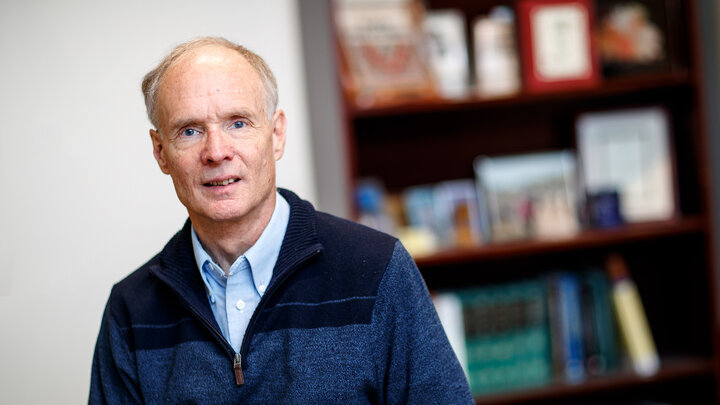Paul Staswick, University of Nebraska–Lincoln agronomy and horticulture professor, retired January 3 after a 36-year career of research and teaching in the Department of Agronomy and Horticulture.
A native of Washington state, Staswick’s career focused on the fundamental aspects of plant biology related to plant productivity, crop plant quality and disease resistance mechanisms. Early in his career, he worked on soybean protein biochemistry.
Gradually Staswick shifted to studying the plant hormone jasmonic acid, which at the time was not even considered a true hormone. His team discovered the gene family that encodes the enzymes that link amino acids – building blocks of proteins – to the hormones auxin and jasmonic acid. These are important hormones because they help to control plant growth and signal resistance to diseases and pests. Much of this research involved a small flowering plant called Arabidopsis, which is widely used as a model organism in plant research.
Staswick’s most significant contribution to plant biology was the discovery that jasmonic acid must be biochemically linked to the amino acid isoleucine for it to become an active hormone. This was a paradigm shift because all other plant hormones, including auxin, are inactivated when linked to another molecule.
Similar genes are found in numerous other plant species, where they have been shown to have the same role as in Arabidopsis. Staswick’s discoveries about how hormone activity is controlled in plants may be used to further protect plants from insects and disease or to regulate their growth.
The significance of this research is evidenced by Staswick’s paper in The Plant Cell being cited more than 1,000 times by other authors. Two additional papers, published in The Plant Cell and in Proceedings of the National Academy of Sciences, have nearly that many citations as well.
Growing up on a dairy farm north of Seattle, Staswick said he didn’t care to work with the cows but enjoyed being in the fields planting and harvesting.
While in high school, he built 1,000 square feet of greenhouses and raised ornamental plants to sell. After graduating, Staswick worked at a large commercial greenhouse before deciding to complete an undergraduate degree at Washington State University in Pullman.
“I started in the business option, thinking I wasn’t smart enough to succeed in difficult science courses. While taking a biochemistry class I became so fascinated by the subject that I switched to the research option in agronomy,” Staswick said. “I found I could do well if I worked hard at it.”
He completed a Bachelor of Science degree in agronomy in 1978.
Realizing he really liked the sciences, Staswick attended Purdue University where he earned a doctoral degree in soybean protein biochemistry in 1982. This was followed by a two-year post-doctoral position at University of California, San Diego, where he learned the very new methodology of gene cloning and analysis.
“I remember in junior high wanting to be a research botanist because it sounded impressive, and I had an interest in plants by then. Little did I know then that it really would become my lifetime career,” Staswick said.
In 1985, Staswick began his career at Nebraska. His education in plant biochemistry and molecular biology turned out to be well suited for the new, and at the time unusual, plant geneticist/molecular biologist assistant professor position.
In addition to research, Staswick developed and taught AGRO 810 Plant Molecular Biology course for 34 years. The course covers the molecular genetic basis of biological function in higher plants, genome organization, gene structure and function, regulation of gene expression, recombinant DNA and genetic engineering principles.
“I am grateful for the opportunity I had to develop my scientific career here at UNL, and am most thankful for all of those, going all the way back to my parents, who helped and guided me along my life journey,” Staswick said.
In retirement, Staswick plans to continue to work on writing research papers and to collaborate with others. He also plans to camp in National Parks and other interesting places around this great country, hike in the mountains whenever possible and spend time with family near and far.




